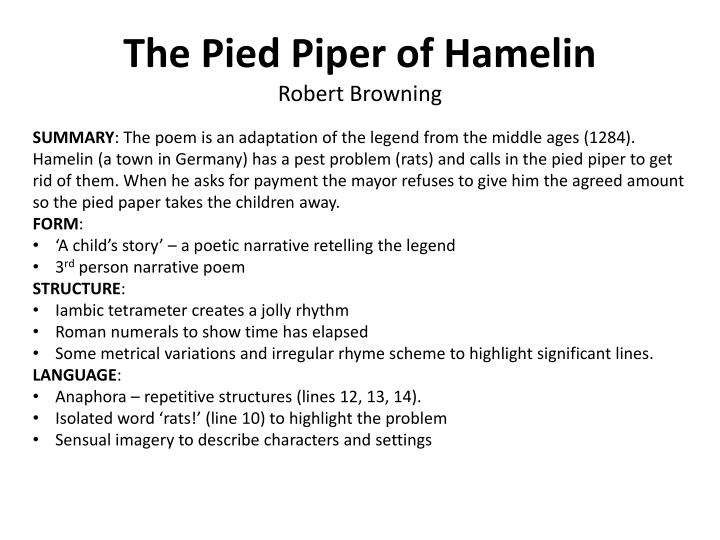

The story is often referenced in connection with charismatic leadership, i.e. Depending on the version, at most three children remained behind (one was lame and could not follow quickly enough, one was deaf and followed the other children out of curiosity, and the last was blind and unable to see where they were going) who informed the townspeople of what had happened when they came out of the church. One hundred and thirty boys and girls followed him out of the town, where they were lured into a cave and never seen again note Or coming out in Siebenbürgen/Transilvania. On Saint John and Paul's day while the inhabitants were in church, the piper returned and played his pipe yet again, this time attracting the children of Hamelin. The man left the town angrily, but vowed to return some time later, seeking revenge. Despite his success, the people reneged on their promise and refused to pay him (or offered to pay him a very measly amount of money, depending on the version). The man accepted, and played a musical pipe to lure the rats via song into the Weser River, where all of them were drowned. The townsmen then promised to pay him for the removal of the rats.

In 1284, while the town of Hamelin in Lower Saxony, Germany was suffering from a rat infestation, a man (sometimes described as looking rather like an elderly woman) dressed in pied (meaning multi-colored or clownish, rather than pastries to the face) clothing appeared, claiming to be a rat catcher. Although (like most fairy tales) there are various versions, the basic story is as follows: The Pied Piper of Hamelin is a classic German fairy tale/folk legend frequently referenced in other works and media. Richard Rowlands Verstegan, A Restitution of Decayed Intelligence (1605)


 0 kommentar(er)
0 kommentar(er)
